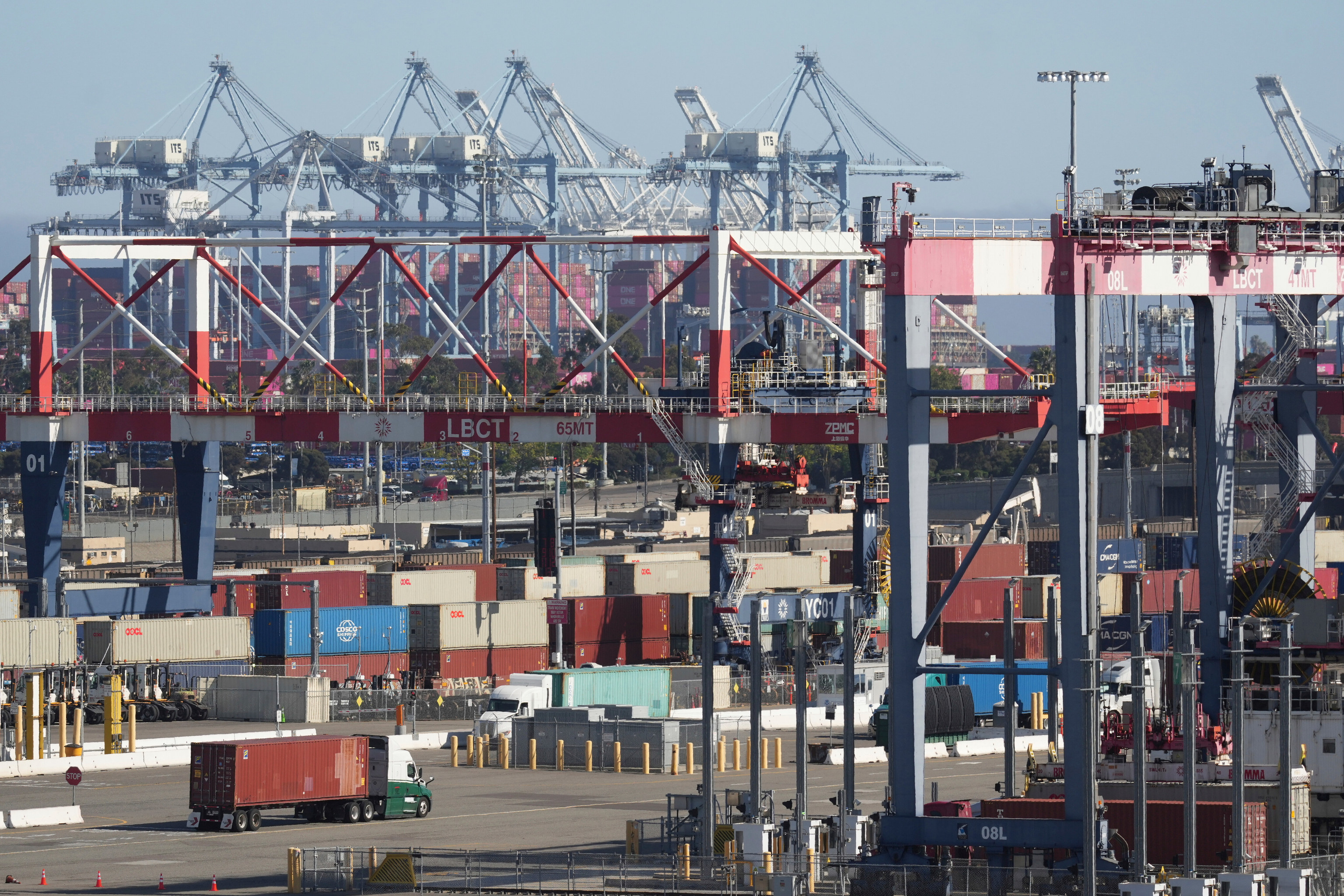Donald Trump has never been in favor of a strong dollar. Although the strength of a currency is usually seen as a sign of economic power, for Trump, it seems to be an obstacle. Throughout his presidency, as well as in his previous one, he has publicly criticized the Federal Reserve for keeping the dollar "too high."
Ultimately, it is not unreasonable to consider that weakening the dollar is one of the hidden objectives—or perhaps not so hidden since he has mentioned it himself—of Trump as he escalates his trade rhetoric and puts the world on edge with new tariff threats.
Every time the idea of a trade war has resurfaced or barriers to imports have been announced, currency markets have reacted with volatility, and the dollar has weakened against the euro.
As shown by the exchange rate evolution since Trump's inauguration, on that day it took 0.97 euros to buy a dollar. Last Thursday, only 0.90. And although it might seem positive - a strong euro - it actually harms the European export sector and the entire industry of goods and services that support it.
How could a weak dollar benefit the US economy?
This move, although seemingly collateral, ends up playing into the economic interests that Trump defends: a weaker currency that stimulates American exports and reduces the goods and services coming from abroad. In other words, the U.S. trade deficit could decrease significantly without necessarily making American products and services more competitive.
A strong dollar makes American products more expensive overseas, while a weak dollar - which Trump potentially wants - makes them cheaper.
Let's consider a simple example: if a company from Ohio sells tractors to Spain and the dollar is strong, their machines become more expensive for their European customers. However, if the dollar weakens, those tractors will cost less in Spain, and the American manufacturer will receive the same amount for their tractor. They sell cheaper in Spain but receive the same income in the U.S. Trump knows this, and that's why by weakening the dollar, he aims to stimulate exports, boost domestic production, and reduce the trade deficit, which he sees as a symbol of "economic weakness."
A cheaper dollar also makes European exports to the U.S. more expensive, which in the short term can benefit the American industry. If a Chinese or European product, due to the exchange rate, starts to cost more in the U.S., American consumers may opt for goods that have not increased in price and are manufactured domestically. This not only benefits employment in sectors like American industry or agriculture but also reinforces the "America First" narrative that Trump has used as a political flag. In summary: export more, import less, and reindustrialize the U.S.
But this strategy, designed to benefit the U.S., has significant secondary effects on other regions of the world. Especially in Europe, whose currency - the euro - appreciates when the dollar weakens. And this, far from being good news, poses several problems.
When the euro strengthens against the dollar, European products become more expensive in international markets. Companies that sell outside the eurozone, such as automobile manufacturers, machinery, chemicals, or food producers, lose competitiveness. If a liter of Spanish olive oil cost $10 in the U.S. before, it could now cost $11 if the dollar weakens by 10%. That is, solely due to the exchange rate, the European product loses competitiveness in markets outside the eurozone.
Implications for tourism in Spain
One of the sectors most sensitive to the weakening of the dollar is tourism. If the U.S. currency loses value against the euro, American visitors have reduced spending power in Europe. With each American dollar, they get fewer euros to spend during their trip. This automatically makes their stay more expensive: hotels, meals, transportation, leisure, and shopping cost them more.
In 2024, this sector generated more than 207 billion euros and contributed approximately 13.1% of the national GDP, according to Exceltur data. A significant portion of these revenues comes from foreign visitors, including a growing number of American tourists (over 4.2 million in 2024 as reported by the INE), known for their high level of spending. In a country where tourism supports millions of jobs and indirect economic activities, the impact of a weaker U.S. currency is not insignificant.
Additionally, many European companies, including Spanish exporting SMEs, operate on tight margins. A loss of competitiveness due to the exchange rate can make those margins disappear. It is not a matter of grand monetary theories: it is a reality that directly affects the income of thousands of companies.
The outlook is not entirely negative: there are some benefits
However, not everything is negative for Europe. A weak dollar makes imports of raw materials priced in that currency, such as oil or gas, cheaper. This can help reduce energy costs, something especially relevant after the price crisis experienced in recent years. It can also help contain inflation at a time when prices have hit European households hard.
Still, the balance is not entirely favorable. Because while Europe may benefit from certain reductions in its energy bills, it suffers from the loss of competitiveness in its productive fabric, and from the possible slowdown of strategic sectors such as tourism, food, or automotive.
Trump, through his actions and statements, makes it clear that he does not see the dollar as a symbol of national strength but as a tool to reposition the United States in the global economy. Everything indicates that if weakening the currency helps his exporters, his industry, and his political discourse, he will not hesitate to push in that direction. In this context, perhaps we are focusing too much on headlines about tariffs and trade wars when the real goal could be another: indirectly forcing a depreciation of the dollar that benefits the economic interests of the U.S.
